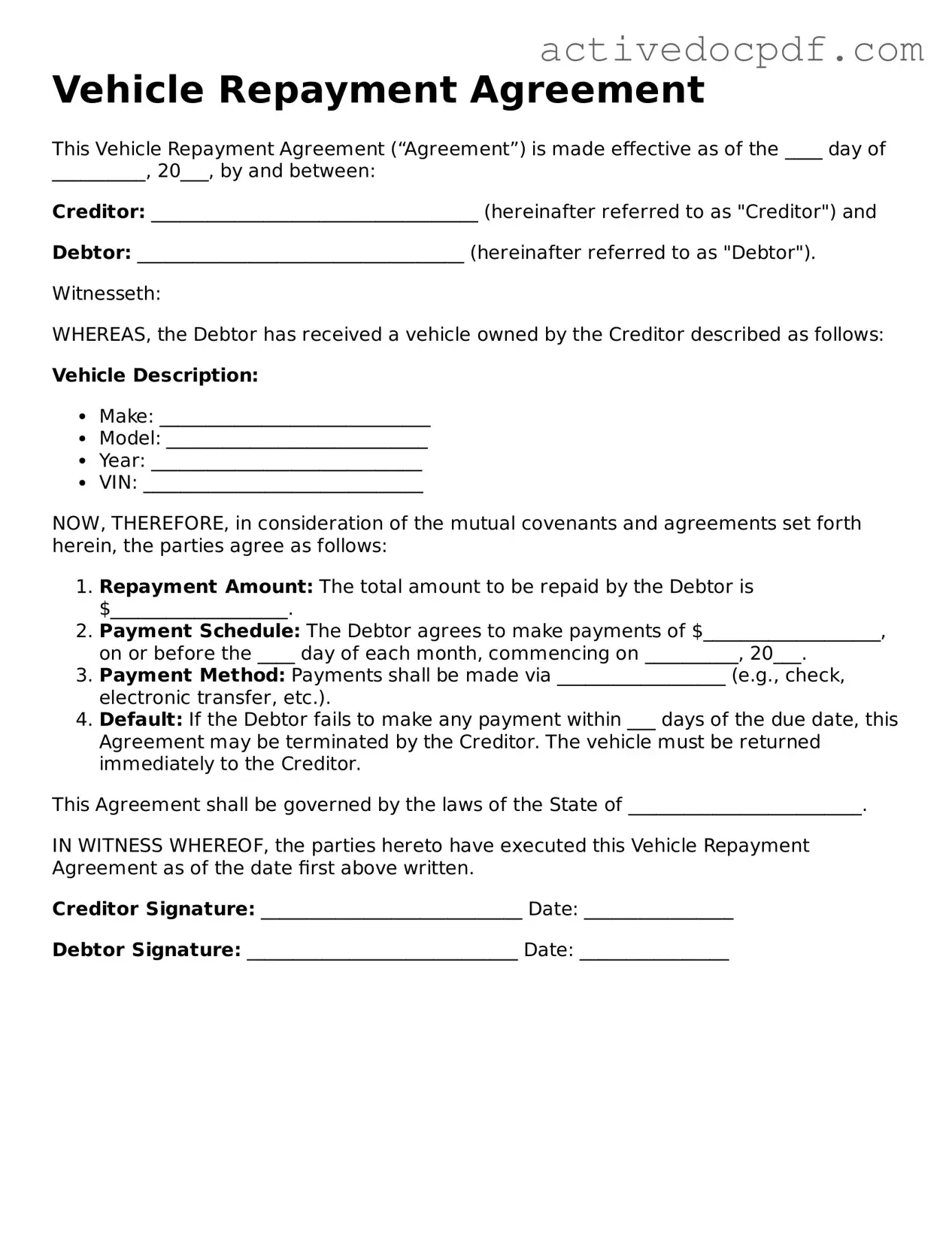The Vehicle Repayment Agreement form is a legal document that outlines the terms under which a borrower agrees to repay a loan secured by a vehicle. It specifies the repayment schedule, interest rates, and consequences of default. This form is crucial for both lenders and borrowers to ensure clarity and mutual understanding regarding the financial obligation.
Both parties involved in the loan transaction need to complete the form. This includes the borrower, who is receiving the loan, and the lender, who is providing the funds. Completing the form is essential to formalize the agreement and protect the interests of both parties.
The Vehicle Repayment Agreement form typically requires the following information:
-
Borrower's full name and contact details
-
Lender's full name and contact details
-
Details of the vehicle, including make, model, and VIN
-
Total loan amount
-
Interest rate and repayment terms
-
Payment schedule, including due dates
-
Consequences of defaulting on the loan
How is the repayment schedule structured?
The repayment schedule is usually structured to specify regular payment intervals, such as weekly, bi-weekly, or monthly. Each payment will typically include both principal and interest. The form should clearly outline the due dates for each payment and the total number of payments required to fully repay the loan.
What happens if a borrower defaults on the agreement?
If a borrower defaults, the lender has the right to take specific actions as outlined in the agreement. This may include:
-
Charging late fees
-
Repossessing the vehicle
-
Reporting the default to credit bureaus
It is crucial for borrowers to understand these consequences before signing the agreement.
Can the terms of the Vehicle Repayment Agreement be modified?
Yes, the terms of the Vehicle Repayment Agreement can be modified, but this requires mutual consent from both the borrower and the lender. Any changes should be documented in writing and signed by both parties to ensure enforceability.
Yes, it is advisable to seek legal advice before signing the Vehicle Repayment Agreement. Understanding the terms and implications of the agreement can prevent future disputes and ensure that both parties are aware of their rights and responsibilities.
